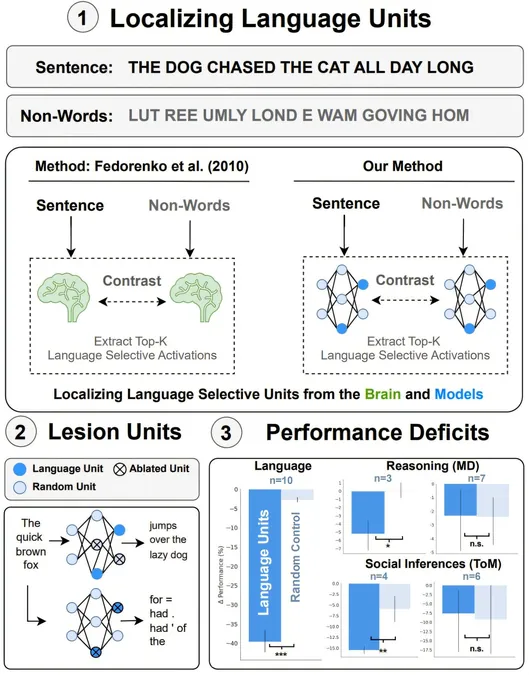
Revolutionary Discovery: AI Models Mimic Human Language System!
2025-05-12
Author: Arjun
AI Meets Human Brain: A Groundbreaking Connection
Researchers from EPFL have made an astonishing discovery that could change the way we understand artificial intelligence! They found that key "units" in large AI models reflect the language system of the human brain. When these essential units were disabled, the models struggled dramatically in language tasks, showcasing their critical role.
Large language models (LLMs) have already amazed us with their ability to understand, generate, and even reason with language. However, the mystery of how these models operate on the inside remains. To unravel this enigma, scientists from the NeuroAI Laboratory, along with colleagues in Natural Language Processing, set out to investigate if LLMs have specialized components similar to those found in the human brain.
Unearthing Language-Selective Units!
At the prestigious NAACL 2025 conference in Albuquerque, researchers revealed their findings from studying 18 popular LLMs. They discovered that certain units constitute a crucial network dedicated to language processing. Inspired by neuroscience, they identified 'language-selective units' in the AI by comparing their activity when reading actual sentences versus random word sequences.
According to Assistant Professor Martin Schrimpf, these language-selective units align with the brain's Language Network, emphasizing their importance in natural language comprehension.
The Shocking Role of Fewer Than 100 Neurons!
To delve deeper, the team tested the impact of removing these language units. The results were startling—without these specific units, the models failed to produce coherent text and flunked linguistic benchmarks. Lead author Badr AlKhamissi notes that fewer than 100 neurons—about 1% of the model's total units—were vital for language functions. Disrupting these caused a dramatic collapse in language performance!
Beyond Language: Exploring Reasoning and Social Thinking!
This research sparks intriguing questions: Are LLMs equipped with specialized units for reasoning or social intelligence? The researchers investigated this with other brain networks in mind, discovering that while some models feature these reasoning units, others do not. This raises questions about the models' training processes and their inherent strengths—an avenue ripe for further exploration.
What Lies Ahead? The Future of AI Research!
Looking forward, the team aims to study multi-modal models that process diverse types of data, including images and sounds. Could language deficits from LLMs inform us about human reading capabilities? AlKhamissi is eager to find out how these models compare to human cognitive processes.
These findings not only enhance our understanding of LLMs but also draw parallels to human cognition. Just as strokes can impair language networks in our brains, disabling specific AI units produces incoherent results, suggesting crucial similarities between artificial and human intelligence.
A Path to Understanding Our Own Minds!
The ultimate hope is that this research will not only advance AI technology but also lead us to better insights into human brain function, paving the way for improved diagnostics and treatments for neurological conditions.

 Brasil (PT)
Brasil (PT)
 Canada (EN)
Canada (EN)
 Chile (ES)
Chile (ES)
 Česko (CS)
Česko (CS)
 대한민국 (KO)
대한민국 (KO)
 España (ES)
España (ES)
 France (FR)
France (FR)
 Hong Kong (EN)
Hong Kong (EN)
 Italia (IT)
Italia (IT)
 日本 (JA)
日本 (JA)
 Magyarország (HU)
Magyarország (HU)
 Norge (NO)
Norge (NO)
 Polska (PL)
Polska (PL)
 Schweiz (DE)
Schweiz (DE)
 Singapore (EN)
Singapore (EN)
 Sverige (SV)
Sverige (SV)
 Suomi (FI)
Suomi (FI)
 Türkiye (TR)
Türkiye (TR)
 الإمارات العربية المتحدة (AR)
الإمارات العربية المتحدة (AR)